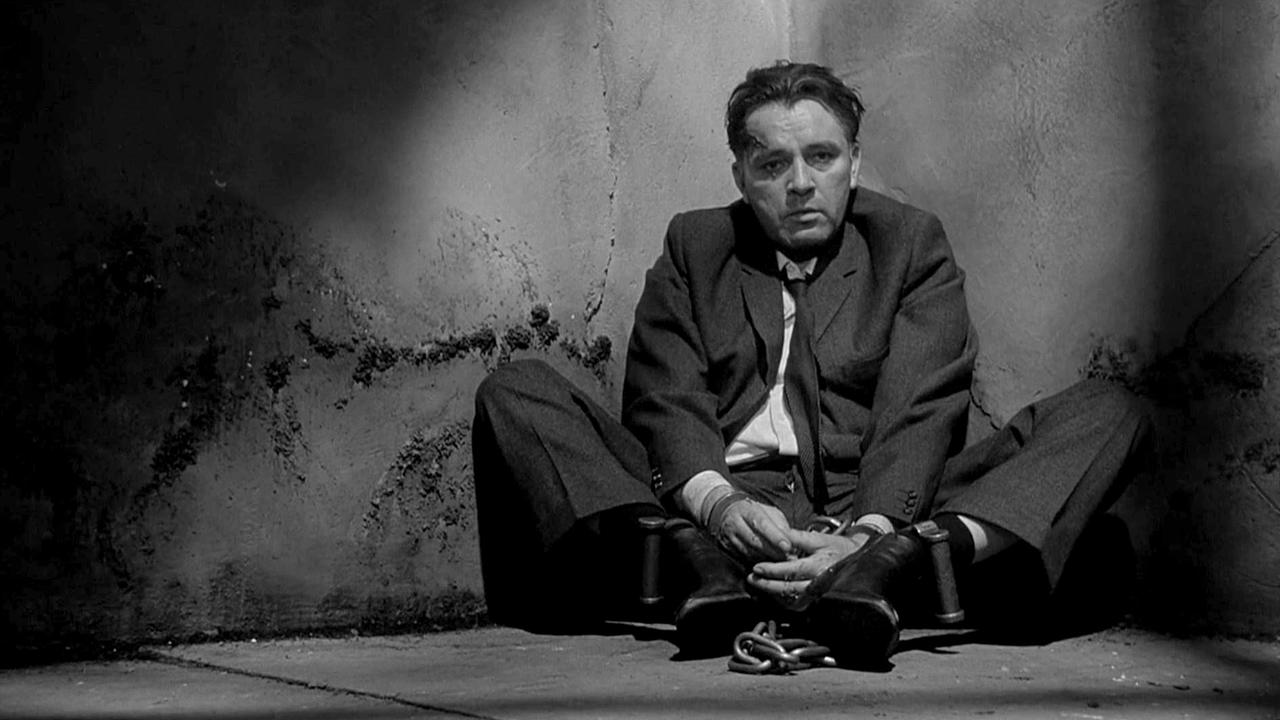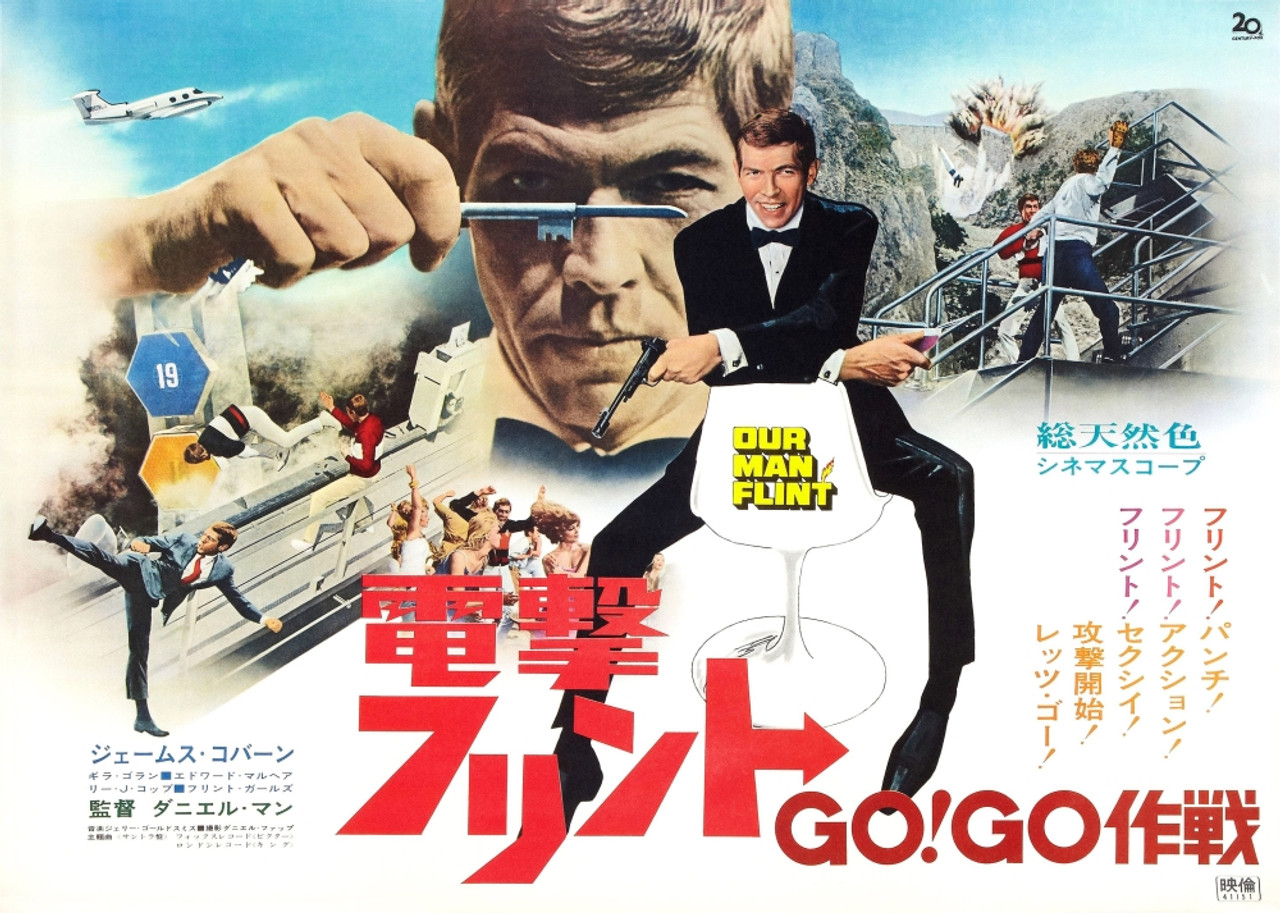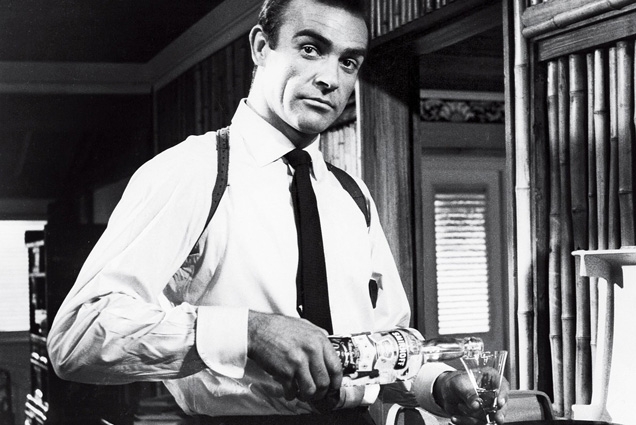The Wonderful World of Decca Phase 4 Stereo: BOND and BEYOND with Roland Shaw and his Orchestra - PART 2
Continuing our deep dive into the secret agent stylings of Roland Shaw on a series of classic albums from the 1960s and 70s
The Albums
Themes from the James Bond Thrillers, Vols. 1-3 are the first outings for Roland Shaw on the US imprint of Decca, London Record. They are to be avoided because they were all pressed in the US. All the tracks reappear on later UK Deccas and UK-pressed Londons, albeit in different configurations.
This contains a well-balanced mix of themes from the first four films, plus several underscore cues. This inclusion of music beyond the films’ main title themes was a distinguishing feature of the Shaw albums, and set them apart from everybody else producing covers of this music.
Shaw's version of the iconic James Bond Theme is taken at quite a lick, and is every bit as thrilling as the various other versions recorded by Barry.
Shaw’s inclusion of several underscore tracks from Monty Norman’s Dr. No score are especially welcome, and really swing with that great 60s vibe. The cover vocals are no better or worse than the originals.
One thing you will immediately notice in the covers of Thunderball, Goldfinger et al is the fabulously tight bass and drums (that fantastic drumming again) and soaring brass playing that more than competes with the originals (it’s quite possible some of Shaw’s session players also recorded for Barry).
You will also note liberal amounts of improvising solos included within the mix. One sonic note: the tape saturation is often pushing towards the max - many of these tracks teeter on the edge of distortion (especially Thunderball).
The ways in which Shaw puts his own stamp on the originals is so imaginative. Listen to how he reworks From Russia with Love, including prominent use of the cimbalon - an instrument Barry used often to convey a Russian/Eastern European flavour, but which is not present on the original soundtrack version - and adding delicious string counterpoint and florid arabesques to the main tune that are even more Barry-esque than Barry is himself. It’s just all so tastefully done.
The joy of this album is that Shaw adds music from other secret agent and spy films/TV shows that emerged in the wake of the Bond craze. The sonic palette is therefore widely expanded. I’ve already talked about Shaw’s fabulous cover of I Spy (seek out the even better-sounding 45rpm single of this).

 Richard Burton in The Spy Who Came In From the Cold (1965)
Richard Burton in The Spy Who Came In From the Cold (1965)
Not all spy movies of the 60s were upbeat. John Le Carré's The Spy who Came in from the Cold offered Richard Burton in one of his most celebrated roles in a gritty cat-and-mouse game set in a divided Berlin. The appropriately muted, evocative score was by Sol Kaplan, and serves as a nice contrast to the other tracks on the record.
Another highly successful series of films that, tonally, fell somewhere between Fleming and Le Carré, was launched with The Ipcress File in 1965, starring Michael Caine as the world-weary British agent Harry Palmer.
 The series shared much of Bond's DNA, not surprisingly because the producer was Harry Saltzman (half of the Bond films’ Eon Productions), bringing with him Bond's editor, Peter Hunt, and production designer, Ken Adam. The music was also by John Barry, who exploited his taste for exotic instrumentation to great effect, using the cimbalom to evoke Russian menace on the streets of London. Here Shaw does a more straightforward version, eschewing the cimbalom, which I think is a mistake. The result is a track that fits perfectly within the album as a whole, but compared to Barry's original has lost that atmosphere of strangeness and quiet menace.
The series shared much of Bond's DNA, not surprisingly because the producer was Harry Saltzman (half of the Bond films’ Eon Productions), bringing with him Bond's editor, Peter Hunt, and production designer, Ken Adam. The music was also by John Barry, who exploited his taste for exotic instrumentation to great effect, using the cimbalom to evoke Russian menace on the streets of London. Here Shaw does a more straightforward version, eschewing the cimbalom, which I think is a mistake. The result is a track that fits perfectly within the album as a whole, but compared to Barry's original has lost that atmosphere of strangeness and quiet menace.
Edwin Astley’s distinctive theme for the TV series The Saint (starring future Bond actor, Roger Moore), with its tightly clustered muted trumpets at the open, is given a suitably energized outing.
In the wake of Bondmania, film and television companies fast-tracked numerous secret agent projects, all demanding their own Barry-tinged music. One of the most successful of Bond imitators was the series starring James Coburn as an urbane American agent, which kicked off with Our Man Flint (1966).
 Our Man Flint (1966) - Original Japanese Poster
Our Man Flint (1966) - Original Japanese Poster
Jerry Goldsmith, one of the most distinctive film composers to emerge in the 60s (his credits include Planet of the Apes, The Omen, Star Trek: The Motion Picture, and Alien) provided a theme which channeled the Barry sound in its guitar licks and brass stabs. But he also added his own distinct elements - percussion and jazzy improvisations - to help convey the light-hearted tone of the film, itself something of a send-up of the whole Bond phenomenon.
Back in the U.K., a quirky TV series that combined Bondian elements with fantasy and sci-fi became a cult classic and ran for many years. The Avengers launched the careers of several subsequent Bond girls -- Honor Blackman in Goldfinger and Diana Rigg in On Her Majesty's Secret Service. The hero, always immaculately dressed in the finest Savile Row suits, with accompanying umbrella and bowler hat, was played by Patrick MacNee, who later featured as Roger Moore's accomplice in A View to a Kill (1985).
 The Avengers had a killer theme written by Laurie Johnson, already a theatre, film and TV veteran, who had just penned the score for Stanley Kubrick’s Dr. Strangelove, or How I Learned to Stop Worrying and Love The Bomb (1964). After the Main Theme’s opening brass fanfares, the jaunty accompaniment (incorporating an unusual array of instruments) combines with a swooning violin line to perfectly match the show’s quirky, humorous elements and secret agent swagger.
The Avengers had a killer theme written by Laurie Johnson, already a theatre, film and TV veteran, who had just penned the score for Stanley Kubrick’s Dr. Strangelove, or How I Learned to Stop Worrying and Love The Bomb (1964). After the Main Theme’s opening brass fanfares, the jaunty accompaniment (incorporating an unusual array of instruments) combines with a swooning violin line to perfectly match the show’s quirky, humorous elements and secret agent swagger.
In many ways this is the most interesting of all the Roland Shaw albums, since it includes not only the gorgeous main title theme from You Only Live Twice, but numerous samples of underscore from this and other Barry scores. Also the artwork for the cover is not only amongst the best of all the Phase 4 records, but I would argue a real gem of that period in album design in general.
Famously, Barry hired Nancy Sinatra, daughter of Frank, to sing the title song for the new Bond film. Nancy had become a big pop star in her own right off the back of hits like These Boots Are Made for Walkin’ (which includes one of the greatest bass riffs/slides ever, courtesy of Chuck Berghofer; the electric bass is played by Carol Kaye of The Wrecking Crew, also featured on the song).
Unfortunately, during the session for You Only Live Twice, Sinatra was so nervous that Barry struggled to get a satisfactory take, and ended up having to edit together numerous takes to make the thing work at all. Sinatra’s voice definitely feels underpowered in the final result, though its more intimate quality definitely suits the mood of the song. This, and the whole score, remains one of Barry’s most lyrical and attractive Bond outings.
For his version of the title song, Roland Shaw opts for a small female group, given heavy reverb, to provide the vocal. Yes, it is somewhat cheesy, but entirely in keeping with the Easy Listening vibe of the time. It has really grown on me - it just makes me chuckle.
We also get Shaw’s beautifully understated version of Barry’s exquisite scoring of Bond’s participation in a traditional Japanese wedding, and the more bombastic “Capsule in Space”, which accompanies the scenes where arch-villain Blofeld’s marauding rocket swallows up various NASA space capsules.
This particular Barry cue has gone on to have a massive afterlife, sampled and referenced often by various electronica artists. Here I cannot resist mentioning its presence on one of the greatest of all Bond cover tracks, “On Her Majesty Secret Service”, as performed by British electronica duo, The Propellerheads, working in collaboration with later Bond composer David Arnold for his superb 1997 album of Bond covers, titled Shaken and Stirred. The track obviously features music from OHMSS, but in the middle section the “Capsule in Space” music puts in an extended appearance leading up to an ever-so-funky recapitulation of the OHMSS theme. Play LOUD!
Returning to Roland Shaw, those breathy, somewhat disembodied female vocals return for cover versions of “The Look of Love” and “Let the Love Come Through”. Of course they are no match for the Dusty Springfield original of the former, but again this is just too much fun. “Let the Love Come Through” was purely an instrumental in the film, but here Shaw opts for the vocal version with lyrics by Hal David. (David was to be a future Bond lyricist with John Barry for “We Have All the Time in the World”, sung so memorably by Louis Armstrong in OHMSS, and for the title song from Moonraker, Shirley Bassey’s final Bond outing). Note, as always, the fabulous drumming and that characteristically tight rhythm guitar. I wonder how many bachelor pads of the time echoed to this track at the cocktail hour and beyond…..
The cues from Thunderball are both every bit as atmospheric as the originals, even more energized in places, as is the evocative cue from Goldfinger, “Teasing the Korean” (aka the massive henchman, Odd Job).
“Jump Up” is a lovely, effervescent throwback to Monty Norman’s Dr. No, as quintessential an easy listening toe-tapper as you’re ever likely to spin. Again, hats off to the fabulous studio musicians who can slip into any musical idiom called for at the drop of a hat.
This album, released in 1971 to cash in on the arrival of Sean Connery’s return to Bond in Diamonds are Forever, had two incarnations. In the UK there was the single disc Decca release “The Phase 4 World of Spy Thrillers”, while in the US there was the London two-fer, “The Return of James Bond in Diamonds are Forever”. Both featured new recordings of music from Diamonds, OHMSS, plus covers of Lalo Schifrin’s Mission Impossible Theme, and Henry Mancini’s Peter Gunn, plus an assortment of tracks from earlier releases.
As to the artwork, which would be considered somewhat dodgy by today's standards (especially the gatefold image, not reproduced here) - well, it was different times....
In his arrangement of music from Diamonds of Forever you can hear how Shaw, while remaining true to the essence of John Barry's original, has embellished the orchestration to highlight the Hi-Fi aspect of the recording and give it more zest.
He has again added more soaring and swooning contrapuntal string lines to the original: you can clearly hear the legacy of his arranging for Mantovani's orchestra. Then fat, funky bass lines combine with propulsive guitar licks (even throwing in a bit of wah-wah for good measure), latin drums and stabbing brass to give the whole thing an extra tinge of pop and of the exotic. (Many Phase 4 albums highlighted unusual percussion and other sounds of world music to lend a sense of travelogue to their albums).
This is one of my favorite Roland Shaw reworkings.
Interestingly, one of the theme tracks that Shaw leaves more or less unchanged is “On Her Majesty's Secret Service”. Maybe because this was already one of Barry's most exciting inventions -- and why mess with perfection? It was one of the rare title sequences in a Bond film not to feature a song. Instead, to accompany visuals that recapped the previous Connery adventures in preparation for George Lazenby who was to take over the role, Barry built a driving chromatic melody in the brass over a Moog synthesizer riff playing in unison with a bass guitar. The Moog was a completely new kind of sound, and sounds radically different between even Barry's own various recordings of this theme. To this Shaw adds tuba - a fun touch. (I still prefer Barry's original).
As I mentioned earlier, a precursor to Bond was the American TV show Peter Gunn, the creation of Blake Edwards, one of the most eclectic talents among post-WW2 American writer/directors, who found enormous commercial success with the Pink Panther movies.
The iconic theme song, by his long-time collaborator Henry Mancini, undoubtedly influenced later composers working in the genre (including Barry).
It has been much covered, most notably by cult 80s group The Art of Noise, with Duane Eddy taking on the guitar twanging duties. Roland Shaw doubles that guitar line with synthesizer, adds some percussion pops for Hi-Fi glitter, and plays up the drums and jazzy improvisational elements.
Shaw’s superb take on Schifrin’s catchy Mission Impossible theme features extended percussion breaks, a jangling harpsichord improvisation, all driven ever onward by that Phase 4 power bass, rhythm guitar, and drumming, punctuated by brass and sax stabs that will put your stereo through its paces. Does it get any better than this?
There you have it. As good an argument for the Phase 4 process as any, and a remarkable tribute to the power of great arranging and - let me repeat this again - the brilliance of British studio musicians of the 60s and 70s, every bit the match for their American counterparts in New York and Los Angeles.
The best way to hear these albums is undoubtedly the original LPs, either on Decca or London, but always be sure they are made in the UK (as indicated on the record labels). Be ready for tracks that sound like they are on the edge of distortion - that’s clearly a result of pushing the level needles into the red on the original masters, and unavoidable.
Some years ago there was a single LP reissue of the Themes for Secret Agents album available, undoubtedly cut from some kind of digital file. I haven’t heard it. The double CD of all these tracks issued by Poker Records in 2008 is a pale imitation of the original LPs sonically. It's long OOP. It’s nice to have all the tracks easily accessible in one place, but the original LPs are still the way to go. (An earlier, 1988 single CD on London and Decca, is merely a highlights selection, but the sound is still a pale shadow of the LPs).
However you listen, if you’re into this stuff (and who isn’t, frankly), these recordings will bring you hours of musical joy, as they have me for some 50 years or more.
Another Martini anyone?











































